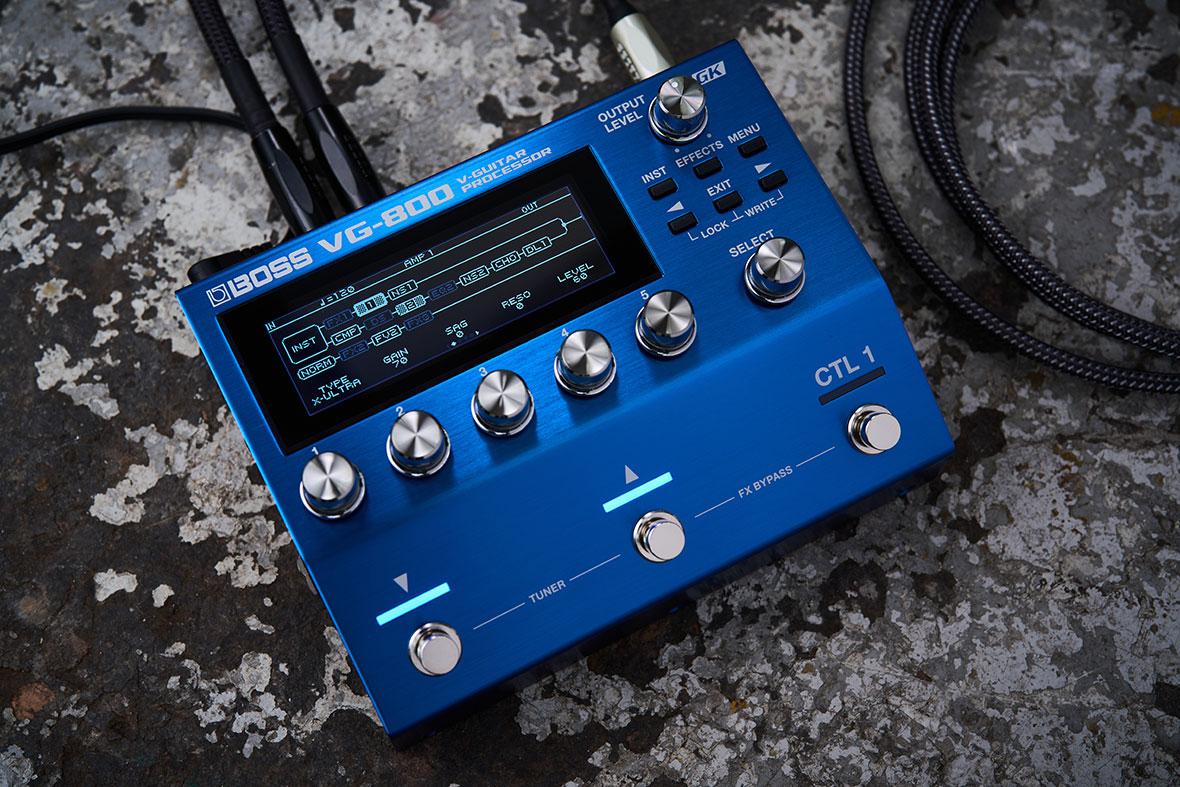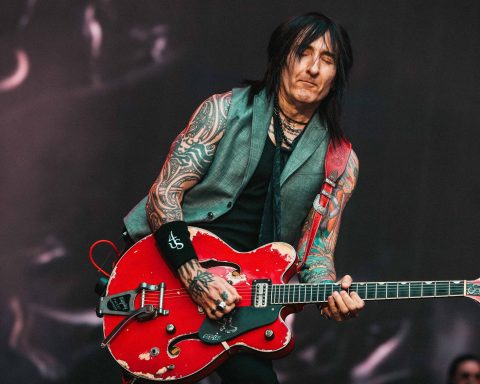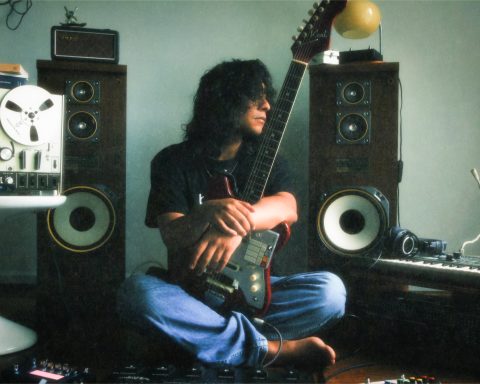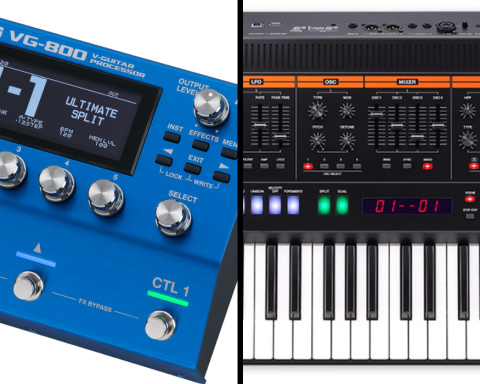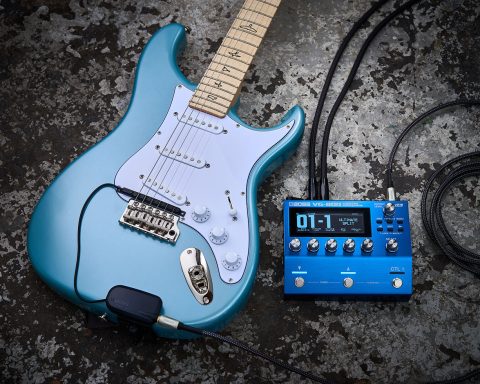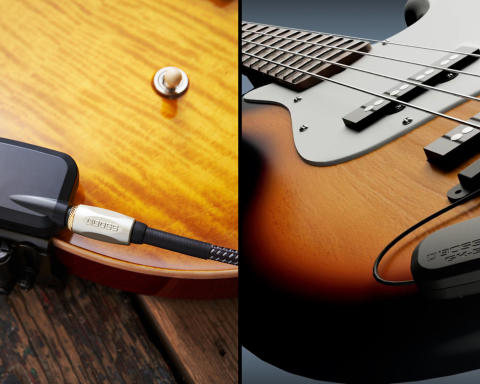The BOSS VG-800 V-Guitar Processor revolutionizes guitar and bass performance, offering a vast array of sounds and cutting-edge features in a sleek, user-friendly design. Equally powerful in the studio and on stage, it allows musicians to explore groundbreaking sonic possibilities, customize alternate tunings, and layer rich textures with ease. This next-generation V-Guitar processor employs the Serial GK interface to empower musicians with an unparalleled level of flexibility and expression. Let’s explore its most innovative features.
Beyond the Familiar
Despite its diminutive size and intuitive operation, the VG-800 V-Guitar Processor includes several features that go beyond modeling familiar guitars, effects, and amplifiers. To explore these features fully, download the free BOSS Tone Studio for VG-800 software (macOS or Windows) from the BOSS website.
BOSS Tone Studio for VG-800 streamlines patch editing and management and allows fast access to the VG-800’s deeper features. It also enables users to exchange patches and import third-party impulse responses (IRs).
The same VG-800 unit can be switched between guitar and bass modes. Therefore, if you have both guitar and bass instruments equipped with GK-series Divided Pickups (GK-5/GK-5B Serial GK digital interface or earlier 13-pin analog types using the BOSS GKC-AD GK Converter), you can access a range of features and settings appropriate for each.
"BOSS Tone Studio for VG-800 streamlines patch editing and management and allows fast access to the VG-800's deeper features."
Switching It Up
The VG-800 can store settings for different GK-series Divided Pickups (GK-5, GK-3, GK-2A, etc.) and GK-ready guitars, meaning users can switch instruments easily without having to recalibrate. In addition to the user-installable GK-5 and GK-5B Divided Pickups, BOSS offers installation kits with expanded fingertip controls. Fitted by skilled techs and luthiers, these kits allow for permanent modification of six- and seven-string guitars and basses with four, five, or six strings.
The new Dual Guitar and Dual Bass functions allow users to create simultaneous combinations that are impossible with standard instruments. Using this feature, two chains of different instrument sounds can be used together in myriad creative ways.
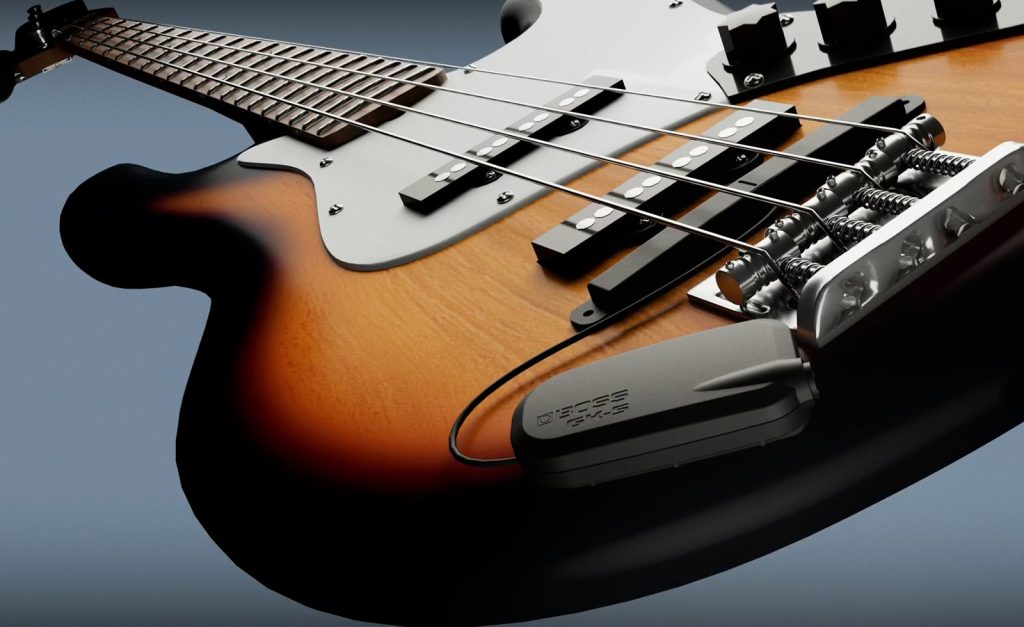
Radical Tuning
It is possible to assign different settings to specific guitar strings—for example, a clean acoustic guitar on the top three strings and an overdriven rock guitar on the bottom three strings. Alternatively, the two sounds can be set to cover specific ranges on the fingerboard so that when you reach the specified position, the sound changes from one model to another. This could be as subtle as changing the pickup settings on the same guitar model or the sound could be something radically different.
As the fret range can be set independently of the two sounds, it is also possible to configure them to overlap, allowing you to move through different tonal variations up and down the neck.
"It is possible to assign different settings to specific guitar strings—for example, a clean acoustic guitar on the top three strings and an overdriven rock guitar on the bottom three strings."
A big part of the BOSS V-Guitar System’s armory has always been its ability to offer latency-free alternate tunings at the push of a switch, achieved by applying different amounts of pitch shift to the individual strings. With the VG-800, the pitch-shifting algorithm produces a very smooth and natural sound, whether you want to drop the whole guitar down to a baritone tuning, switch to a jangly Nashville tuning, or move to a custom open chord tuning.
A virtual capo lets you play in different keys without the need for a physical capo. This avoids the tuning issues experienced when using the capos on guitars fitted with light strings. It is also very liberating to be able to play without the mechanism of a hardware capo interfering with your fretting hand movement.
The smoothness of the pitch shifting is aptly demonstrated in the “B-Bender” factory preset, where the CTL 1 switch (located on the top panel) applies a one-tone pitch glide to the guitar’s B-string to emulate pedal steel.
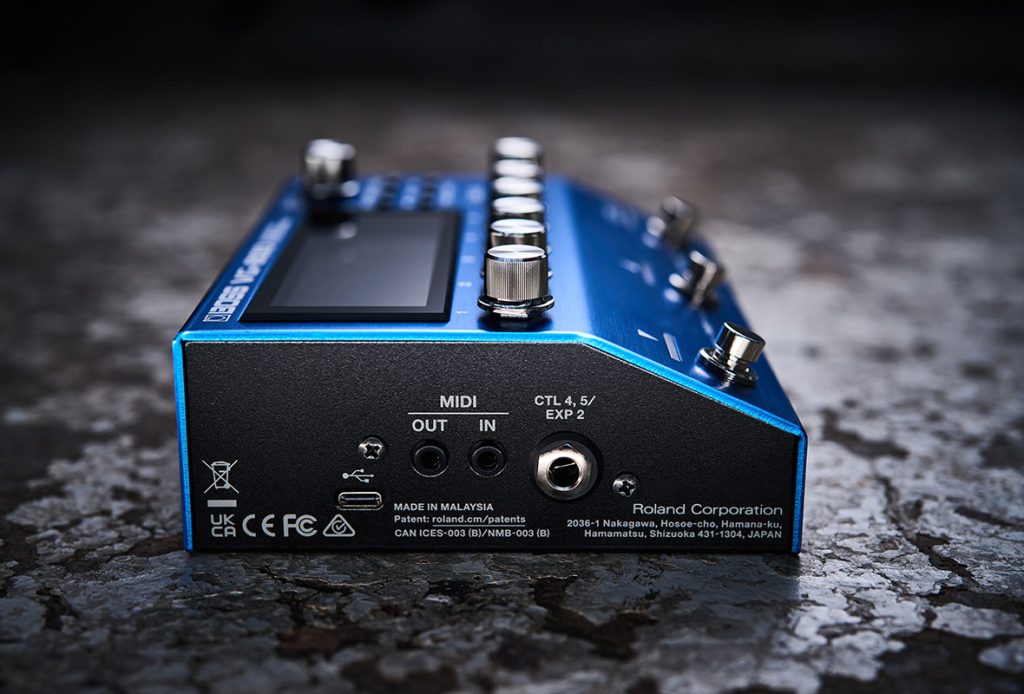
A Range of Tones and Control
The additional control inputs (CTL 2, 3/EXP 1 on the rear panel and CTL 4,5/EXP 2 on the left side panel) allow for further real-time parameter switching or pedal control. GK In/Out jacks on the rear panel enable compatible devices to be linked and played simultaneously. For example, a guitar synth tone from the GM-800 Guitar Synthesizer can be layered with a modeled guitar sound from the VG-800.
Going beyond traditional electric/acoustic guitar, sitar, and banjo modeling, the VG-800 can create a range of synthesizer-style tones, including the legendary Roland GR-300 Polyphonic Guitar Synthesizer. It can also conjure a convincing fretless guitar, bowed-like VIO Guitar/Bass, and other lead and pad-style sounds (complete with filter sweeps and envelope shaping). Remember, all these sounds are created directly from the guitar string signals using cutting-edge DSP, so there’s no lag involved. Your performance and technique remain intact, so everything sounds and feels very natural and expressive.
"Going beyond traditional electric/acoustic guitar, sitar, and banjo modeling, the VG-800 can create a range of synthesizer-style tones, including the legendary Roland GR-300 Polyphonic Guitar Synthesizer."
Recording musicians will especially appreciate the VG-800’s handy guitar-to-MIDI and bass-to-MIDI functionality. These pitch-to-MIDI signals are output via USB-C® and TRS (both connections are located on the left side panel) and can be used in conjunction with all the regular VG-800 features.
BOSS recommends using a BMIDI-5-35 or BMIDI-1-35 cable (3.5 mm TRS to 5-pin DIN) to drive hardware. When used with a DAW, the VG-800 can drive software instruments via USB directly, eliminating the need for extra interface hardware/software.
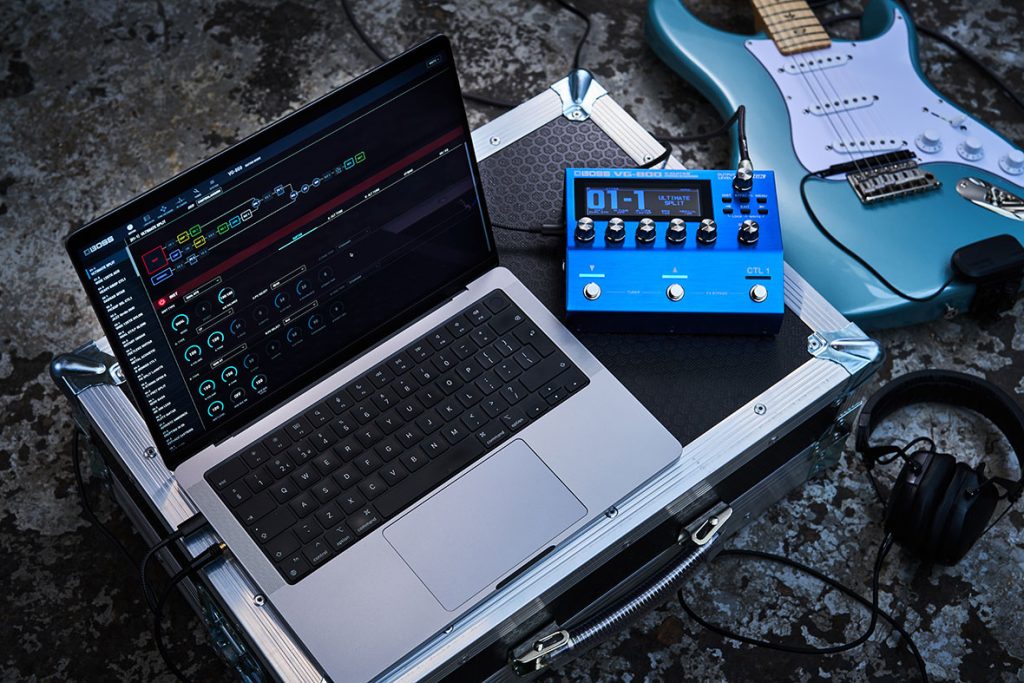
Recording Power and Effects
The advanced pitch-to-MIDI tracking system is the same as that used in the latest BOSS guitar synthesizers—such as the GM-800—delivering fast, accurate performance. When used via USB, the VG-800 can, at the same time, operate as an audio interface for recording and playback, complete with headphone output. Select an audio track in your DAW and you hear the sound of the VG-800. Select a software instrument track and play it directly from the guitar without changing settings.
It is also possible to record the output of the GK Divided Pickup directly into a DAW while keeping the per-string audio streams separate. This allows users to change the guitar sound after the recording has been made by reprocessing/re-amping with the VG-800 at a later time.
"Beyond the familiar delay, reverb, and modulation treatments are the coveted BOSS Slow Gear effect, the rhythmic Slicer sound, classic rotary, and much more."
Finally, it would be remiss not to mention some of the more exotic effects the VG-800 offers. There are many distortion effects, including emulations of BOSS classics like the BD-2 Blues Driver and DS-1 Distortion. Beyond the familiar delay, reverb, and modulation treatments are the coveted BOSS Slow Gear effect, the rhythmic Slicer sound, classic rotary, and much more.
With a vast arsenal of sounds at your disposal, the VG-800 packs a virtual guitar store’s worth of sound into one pedalboard-friendly unit.

